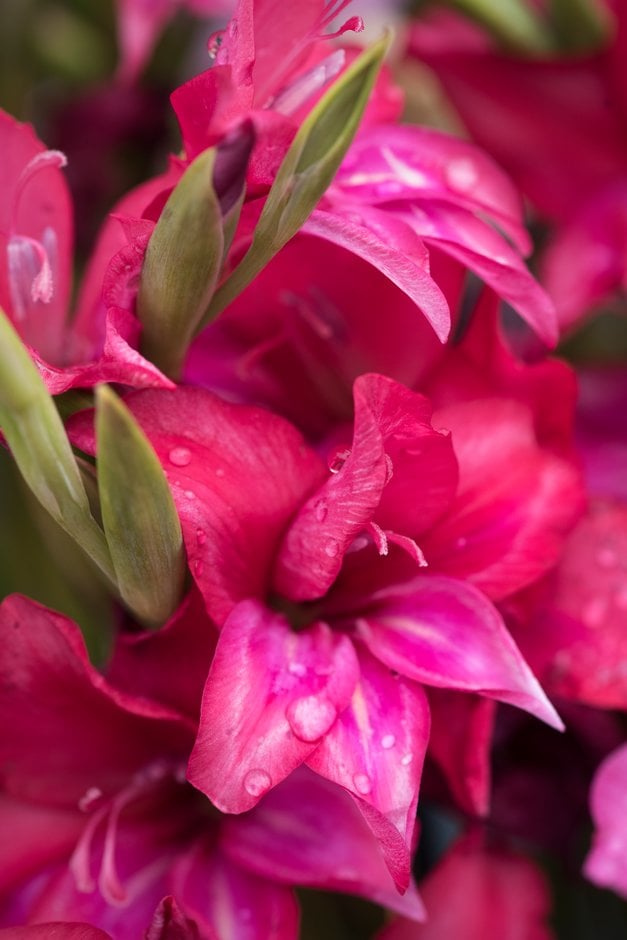Size
Ultimate height
0.1–0.5 metresTime to ultimate height
1–2 yearsUltimate spread
0–0.1 metreGrowing conditions
Moisture
Well–drainedpH
Acid, Alkaline, NeutralColour & scent
| Stem | Flower | Foliage | Fruit | |
| Spring | Green | |||
|---|---|---|---|---|
| Summer | Pink | Green | ||
| Autumn | ||||
| Winter |
Position
- Full sun
Aspect
South–facing
Exposure
Sheltered Hardiness
H3Botanical details
- Family
- Iridaceae
- Native to GB / Ireland
- No
- Foliage
- Deciduous
- Habit
- Columnar upright
- Potentially harmful
- Ornamental bulbs, not to be eaten. Wear gloves and other protective equipment when handling. Pets: Harmful if eaten. For further information and contact numbers regarding pets, see the HTA guide to potentially harmful plants
- Genus
Gladiolus are cormous perennials with fans of sword-shaped or linear leaves and spikes of funnel-shaped flowers
- Name status
Accepted
How to grow
Cultivation
Grow gladioli in fertile, well-drained soil in full sun. Plant corms 10-16cm deep in spring. If the soil is not perfectly drained, plant the corms on a bed of sand. When the flower spikes reach one third to half their final height, feed with a potassium-rich fertiliser such as a tomato feed. Repeat every 10-14 days until three weeks after flowering. In areas where there is frost, lift the corms when the foliage has turned yellow-brown. Snap the stem off the corms and dry the corms off for 14 days and keep the new corms dry and frost-free until planting time
Propagation
Separate cormlets when lifting in autumn
Suggested planting locations and garden types
- City and courtyard gardens
- Cottage and informal garden
- Coastal
- Patio and container plants
- Flower borders and beds
- Cut flowers
Pruning
Snap off old stems from the corms when lifting them for winter storage
Pests
May be susceptible to gladiolus thrip, aphids and slugs
Diseases
May be susceptible to gladiolus corm rot, grey moulds (Botrytis), Fusarium bulb rot, gladiolus core rot, gladiolus dry rot, gladiolus scab and neck rot, fungal leaf spot, and virus diseases
Get involved
The Royal Horticultural Society is the UK’s leading gardening charity. We aim to enrich everyone’s life through plants, and make the UK a greener and more beautiful place.
